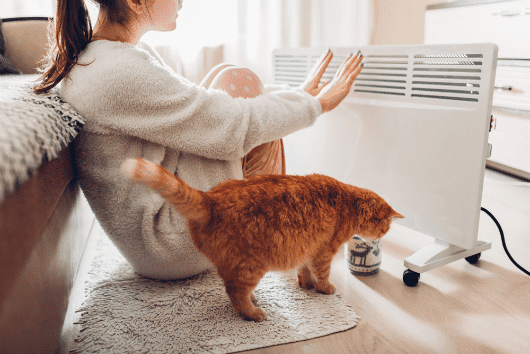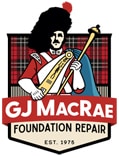Many older homes were built with the main and top floors designed to be the living space, and the basement to function as storage, for a cold room and/or furnaces and laundry areas. As time has passed, several people are beginning to renovate their basements so that they have additional square footage for their family to use. We think this is a great idea because it is substantially cheaper than adding an addition to your home or going through the hassle of selling and moving. The only downfall to this is, what will you do with the cold room?
What is a Cold Room?
Cold Rooms, also referred to as Catinas or Root Cellars, are a room, located in the basement or under the front porch, that as the name suggests, has a lower temperature than the rest of the house. These rooms are typically used to store wine, potatoes, flower bulbs, and other items that need a cold, damp space to thrive. This is not only a good space to house these items, but it is much cheaper than running a fridge!
How Does a Cold Room Work?
Cold Rooms are located in the basement, or under the front porch, which means they are underground. Since the room is not insulated and it is below ground, the room stays cool all year-round. Cold Rooms have a vent that allows air to circulate and keeps the air cool. This keeps specific items (such as potatoes) cool and increases their shelf life dramatically!
Why Does my Cold Room have Condensation?
Cold Rooms are typically constructed with concrete floors and unfinished concrete walls. Concrete itself is porous and allows moisture and air to move through the room easily. This provides the room with humidity which helps increase the longevity of the items that are stored in there. Cold Rooms are also known for having condensation because the warmer air is circulating into the cold space, which causes condensation to form. This is not good because condensation can lead to mold!
What is the Problem with Cold Rooms?
Although Cold Rooms have been around for decades, some new builds are trying to incorporate them, but in a modern context. There are two main problems that typically arise in this situation.
Mould Growth
Many Cold Rooms that are not properly constructed get too hot in the summer and too cold in the winter. This means that they are prone to developing dampness which leads to dripping condensation. This wetness can quickly turn into mold.
Not Deep Enough
Many Cold Rooms are not constructed deep enough into the ground. This leaves the top of the walls and the ceiling above ground level. This means that the coolness from the ground is stuck fighting against the heat from the exposed upper walls and ceiling which makes it impossible to keep the room cool.
How to Fix Your Cold Room
There is a way to fix these issues. The right amount of insulation must be installed. It is important to find the right amount because too much will make your Cold Room too warm in the summer! The best way to approach this is to install the right kind of insulation over the upper areas of the Cold Room walls as well as the ceiling. These areas are, in modern homes, located either above ground or too close to the surface to maintain the low temperature. By doing this, your Cold Room will still have the chance to be cooled from below!
How to Install Proper Insulation
The first step in properly insulating your Cold Room is to start at the ceiling. You can then begin to insulate down the inside walls, as far down as the soil extends on the outside. By leaving the bottom of the walls insulated, you have the ability to monitor the conditions and temperature of the Cold Room to see if more insulation is necessary.
How to Get Rid of a Cold Room
Many people who try to finish their basements run into issues with the Cold Room. Without properly fixing the issue, the condensation and mold from the Cold Room can quickly spread across the entire basement and leave all your hard work and renovations ruined. This can actually occur within a few months!
The only way to fix this is to ensure that the entire basement, including the Cold Room, is properly insulated and all air movement between the Cold Room and the rest of the space is stopped. If you leave the Cold Room uninsulated and separated from the rest of the space, you will encounter the above mentioned issues.
One way to eliminate any cause for concern is to get rid of the Cold Room. This involves closing off vents and properly insulating the Cold Room like you would any other area of your basement.
In the case that you absolutely must keep a functioning Cold Room in your house, we have some tips to help minimize the chance of condensation and mold spreading to the rest of your home.
The first step is ensuring that the Cold Room is properly insulated. This will not only help the space work better, it will also keep the rest of your home safe.
The second step is to ensure that the door between the Cold Room and the rest of your basement is properly insulated. You should also install weatherstripping under the door. This way, in the event that your Cold Room does have condensation, it will not be able to travel into the rest of your basement.
We also suggest that you install vapour barrier on the warm side of the insulation – even on the ceiling. If you prepare the Cold Room as if it was outside your home, it will be much more difficult for any moist air to travel outside the room and into your home. Ventilation should still be functioning, in order to provide the air circulation that your Cold Room needs to properly function. But ensure you have a way to adjust the outside vent so that you can alter it in instances of extreme temperatures.
If you are concerned about your Cold Room, contact the experts at GJ MacRae. Our team has been servicing the Greater Toronto Area for decades and we have seen hundreds of Cold Rooms. We bring knowledge, expertise, and the tools to ensure that your home is happy and safe for your family! Whether you are looking to fix your current Cold Room or eliminate it entirely, our team can help you decide the next steps. Our services, like interior basement waterproofing, exterior basement waterproofing, crack repair and underpinning, will be significant factors in fixing your cold room. We will be there for you throughout the entire process to ensure you know what is happening and that your home will be safe for years to come! Call us today to get started.






